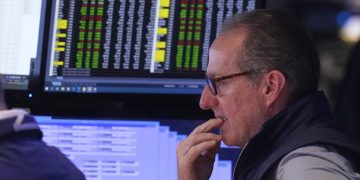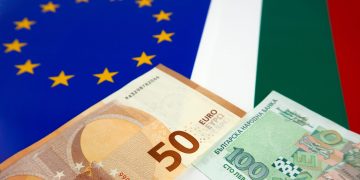Introduction
In the first quarter of 2025, Europe witnessed a striking surge in social media activity focused on Environmental, Social, and Governance (ESG) themes. The volume of ESG-related tweets doubled compared to the previous quarter, reflecting a growing public and investor enthusiasm for sustainable finance. Yet, paradoxically, during the same period, the European green bond market suffered a significant correction, with prices dropping approximately 12%. This puzzling divergence between soaring ESG online chatter and falling green bond prices raises a critical question: Why did the social media buzz around ESG fail to predict the green bond market correction?
This phenomenon spotlights the complex interaction between market sentiment, investor behavior, and financial fundamentals in the sustainable finance domain. While social media often serves as a pulse for investor interest and emerging trends, the disconnect here suggests potential overexuberance or mispricing in green bonds. Exploring the data behind this event and its ripple effects can offer deeper insights into the reliability of social media signals in financial markets and the evolving challenges of ESG investing.
Key Data and Background
The core data underpinning this paradox are striking. According to the European Social Media Analytics Consortium, ESG-related tweet volumes increased by over 100% in Q1 2025, driven by campaigns around COP30 climate commitments and major corporate ESG disclosures. Topics ranged from climate change urgency to corporate social responsibility initiatives. Meanwhile, the European green bond index experienced a sharp price decline, shedding about 12% of its value during the same quarter (see Figure 1).
Several factors contributed to this correction. Macro-level tightening of monetary policies by the European Central Bank (ECB), aimed at curbing inflation, increased bond yields and reduced demand for fixed-income assets, including green bonds. ECB reports indicated a gradual reduction of bond purchases under the quantitative easing program starting late 2024, translating to downward pressure on bond prices in early 2025.
At the corporate level, several high-profile green bond issuers reported lower-than-expected project returns or delays in meeting sustainability milestones, undermining investor confidence. These fundamentals contrasted sharply with the optimistic social media narratives, where ESG enthusiasm was often driven by high-profile endorsements and viral messaging rather than granular financial analysis.
(See Figure 1: ESG-Related Tweet Volume vs. European Green Bond Price Index, Q4 2024–Q1 2025)
This data reveals a critical gap between social media-driven sentiment and underlying market realities, underscoring the limits of digital buzz as a predictor of asset performance.

Cross-Market Impact
The green bond market correction in Europe sent shockwaves across related markets globally, illustrating how ESG-related financial products are interconnected.
Firstly, investor confidence in traditional green funds, which largely mirror the performance of green bonds, weakened. Fund managers reported increased redemptions and volatility, reflecting a reassessment of risk in sustainable portfolios. This uncertainty spilled into other sustainable asset classes, causing price fluctuations beyond fixed income.
Simultaneously, the U.S. green finance sector did not remain immune. American green bond indices exhibited synchronized price swings, though less severe than in Europe, indicating cross-Atlantic investor sentiment contagion. This pattern echoed the 2018 correction in ESG funds triggered by shifting regulatory landscapes but differed in its stronger social media influence component.
Additionally, equity markets experienced indirect impacts. Companies with heavy green bond exposure or ambitious ESG targets faced heightened scrutiny from investors reassessing long-term sustainability versus near-term financial performance.
Historically, similar market dislocations occurred during periods of rapid investor enthusiasm followed by fundamental reassessments. The 2013 “taper tantrum” showed how policy signals could abruptly deflate asset bubbles. Yet, the 2025 ESG correction stands out for its social media intensity juxtaposed with rapid market pullback, raising questions about the evolving role of digital platforms in market dynamics.
Expert Viewpoints and Contrasting Opinions
Expert opinion remains divided regarding the causes and implications of this disconnect between ESG social media buzz and green bond performance.
The European Union’s Climate Commissioner maintains a positive outlook, asserting that short-term market fluctuations do not derail the broader transition to sustainable finance. Official EU reports highlight that despite price corrections, green bond issuance remains robust and aligned with long-term climate targets. The Commissioner argues that heightened social media interest reflects growing public engagement essential for sustained policy support and investor demand.
On the other hand, independent credit rating agencies and financial analysts warn of bubble-like conditions fueled by social media hype. A recent report by GreenBond Analytics suggests that inflated social media chatter around ESG themes led to overvaluation in green bonds, unsustainable given the uneven pace of project implementation and economic headwinds. These agencies recommend caution and deeper due diligence beyond online sentiment metrics.
Moreover, some academic voices challenge the assumption that social media signals reliably translate to financial outcomes. Nobel laureates in economics argue that social amplification can distort risk perceptions, creating feedback loops that decouple market prices from fundamentals, especially in nascent sectors like ESG investing.
These conflicting viewpoints highlight the complexity of interpreting social media data in finance and the necessity of integrating multiple analytical lenses for informed decision-making.
Future Outlook and Strategies
Looking forward, the green bond market and ESG investing landscape could evolve along several trajectories in 2025.
A bullish scenario envisions stabilization and recovery driven by enhanced transparency, improved sustainability reporting, and continued policy support. As ESG projects mature and demonstrate measurable impact, investor confidence may rebuild, supported by more sophisticated social media discourse that incorporates financial rigor.
A bearish outlook anticipates continued volatility, with social media hype cycles contributing to recurrent mispricing and investor fatigue. Regulatory uncertainties and economic headwinds could exacerbate corrections, dampening enthusiasm for green finance innovations.
A moderate scenario expects episodic corrections balanced by gradual progress. Market participants may develop improved tools to differentiate substantive ESG narratives from hype, leading to more resilient pricing mechanisms.
For investors, key strategies include:
- Monitoring ESG project performance indicators alongside social media trends to avoid overreliance on digital sentiment alone.
- Diversifying across geographies and asset classes within sustainable finance to mitigate localized risks.
- Engaging with regulatory developments and corporate disclosures to assess evolving ESG standards and enforcement.
These approaches aim to balance optimism about sustainability with pragmatic risk management in a rapidly evolving market.
Conclusion
The Q1 2025 European experience of soaring ESG social media buzz coinciding with a sharp green bond market correction underscores a crucial lesson: digital enthusiasm, while influential, cannot substitute for thorough financial analysis. This episode reveals the limits of social media as a standalone market predictor and stresses the importance of integrating diverse data sources and expert insights.
As ESG investing matures, how can market participants harness the power of social media without falling prey to hype-induced bubbles? This remains an open question, inviting further exploration into the evolving interplay of technology, finance, and sustainability.

































